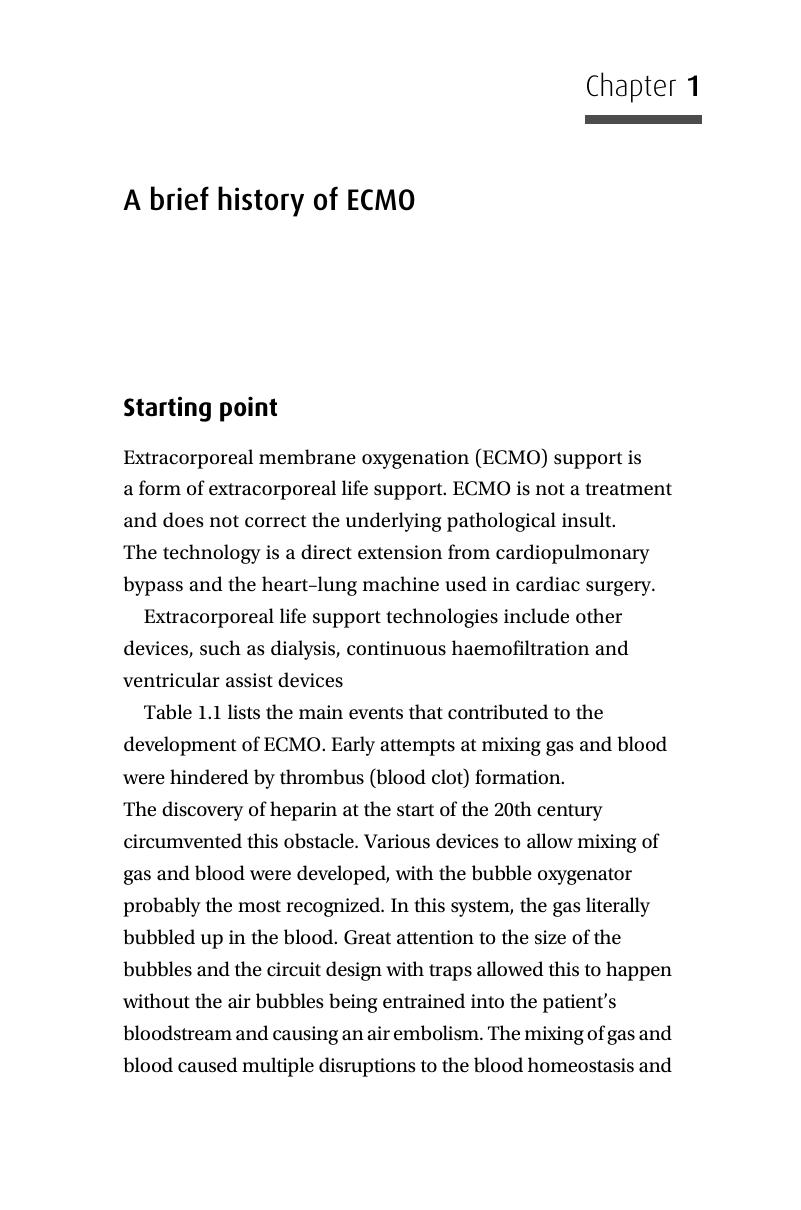Book contents
- ECMO in the Adult Patient
- Core Critical Care
- ECMO in the Adult Patient
- Copyright page
- Contents
- Note from the authors
- Abbreviations
- A patient testimony: I survived ECMO
- Chapter 1 A brief history of ECMO
- Chapter 2 An ECMO service
- Chapter 3 The ECMO circuit
- Chapter 4 Monitoring the patient on ECMO
- Chapter 5 Case selection
- Chapter 6 Cannulation and decannulation
- Chapter 7 Coagulation, blood and ECMO
- Chapter 8 Management of the patient on veno-venous ECMO: general principles
- Chapter 9 Management of the patient on veno-arterial ECMO: general principles
- Chapter 10 Patient transfer
- Chapter 11 Liberation from ECMO
- Chapter 12 Specifics of intensive care management for the patient on ECMO
- Chapter 13 Extracorporeal carbon dioxide removal or ECCO2R
- Chapter 14 ECMO to support organ donation
- Chapter 15 ECMO registries and research
- Appendix: The future of ECMO
- Index
- References
Chapter 1 - A brief history of ECMO
Published online by Cambridge University Press: 19 January 2017
- ECMO in the Adult Patient
- Core Critical Care
- ECMO in the Adult Patient
- Copyright page
- Contents
- Note from the authors
- Abbreviations
- A patient testimony: I survived ECMO
- Chapter 1 A brief history of ECMO
- Chapter 2 An ECMO service
- Chapter 3 The ECMO circuit
- Chapter 4 Monitoring the patient on ECMO
- Chapter 5 Case selection
- Chapter 6 Cannulation and decannulation
- Chapter 7 Coagulation, blood and ECMO
- Chapter 8 Management of the patient on veno-venous ECMO: general principles
- Chapter 9 Management of the patient on veno-arterial ECMO: general principles
- Chapter 10 Patient transfer
- Chapter 11 Liberation from ECMO
- Chapter 12 Specifics of intensive care management for the patient on ECMO
- Chapter 13 Extracorporeal carbon dioxide removal or ECCO2R
- Chapter 14 ECMO to support organ donation
- Chapter 15 ECMO registries and research
- Appendix: The future of ECMO
- Index
- References
Summary

- Type
- Chapter
- Information
- ECMO in the Adult Patient , pp. 1 - 8Publisher: Cambridge University PressPrint publication year: 2017



